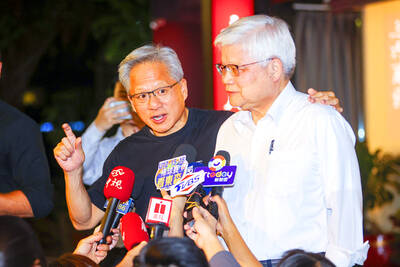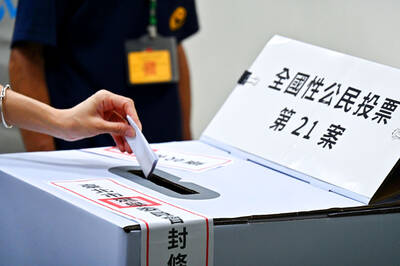In the debate over high-technology work migrating abroad, there has been widespread agreement on at least one thing: The jobs requiring higher levels of skill are the least at risk.
Routine software programming and testing jobs, analysts agree, are the ones most susceptible to being grabbed by fast-growing Indian outsourcing companies. By contrast, the people who devise the early blueprints for projects -- the software architects -- have been regarded as far less likely to see their jobs farmed out.
But Microsoft contract documents show that as far back as 2001 the big software maker had agreed to pay two Indian outsourcing companies, Infosys and Satyam, to provide skilled "software architects" for Microsoft projects. The documents were obtained earlier this month by WashTech, an organization of technology workers based in Seattle, which gave copies to The New York Times.
"The policy prescription you hear from people again and again as the response to the global competition of outsourcing is for Americans to move to high-end work," said Ronil Hira, an assistant professor for public policy at the Rochester Institute of Technology.
"It's important to dispel the myth that high-end work is immune to offshore outsourcing," he said.
"What is not clear," Hira added, "is how much of that high-end work will go abroad."
A Microsoft spokeswoman, Stacy Drake, said that as a matter of policy the company did not comment on individual contracts with suppliers. But, she said, "We often use outside companies for projects."
The outside contractors, Drake said, are used to bring in specialized expertise Microsoft may not have in-house or to bring additional technical support onto a project.
Still, Drake said, building the "core intellectual property" in Microsoft products is left to full-time company employees.
Though definitions vary, software architects are highly skilled workers who often earn six-figure salaries in the US. The Microsoft contracts with Infosys and Satyam show that the work of software architects, senior software developers and software developers was being done by employees of the Indian companies working at Microsoft facilities in the US.
Their work did not come cheap for Microsoft, which was billed US$90 a hour for software architects, or at a yearly rate of more than US$180,000. Senior software developers were billed at US$72 an hour and software developers US$60 an hour.
The on-site work, said Hira, an expert on offshore outsourcing, is usually done by Indian software engineers who come to the US on H-1B visas, which allow foreign workers to be employed in the US for up to six years.
The Indian workers themselves are paid a fraction of what their employers collect. The top annual salaries paid by Indian outsourcing companies to Indian software experts working in the US are US$40,000 or so, Hira said.
The contracts also say that for short stints of work, less than 90 days, Microsoft will pay for round-trip economy airfare for travel between India and the US.
The contracts also include work done in India, by project managers and by software development and testing engineers. The billing rate for this work ranges from US$36 an hour to US$23 an hour.
A spokeswoman for Infosys said the company did not comment on its contracts, and a Satyam spokesman could not be reached.
Critics of the outsourcing trend regard such agreements with Indian contractors, with work done both in the US and in India, as a step toward shifting more and more skilled technology jobs overseas.
"Microsoft has hired vendors whose whole reason for being is to transfer work offshore," said Marcus Courtney, president of WashTech, an affiliate of the Communications Workers of America.
The foreign competition for work at Microsoft, Courtney said, will help the company's management put more pressure on wages for its American workers and reduce employee benefits. Last month, Microsoft announced that it planned to cut costs by an estimated US$80 million a year by trimming prescription-drug benefits, tightening parental-leave policies and making it more expensive to buy Microsoft shares through the employee stock purchase plan.
Despite its use of foreign contract workers, Microsoft expects to add 3,000 to 3,500 full-time employees to its US payroll of 37,000 in the fiscal year that ends next month.

CHAMPIONS: President Lai congratulated the players’ outstanding performance, cheering them for marking a new milestone in the nation’s baseball history Taiwan on Sunday won their first Little League Baseball World Series (LLBWS) title in 29 years, as Taipei’s Dong Yuan Elementary School defeated a team from Las Vegas 7-0 in the championship game in South Williamsport, Pennsylvania. It was Taiwan’s first championship in the annual tournament since 1996, ending a nearly three-decade drought. “It has been a very long time ... and we finally made it,” Taiwan manager Lai Min-nan (賴敏男) said after the game. Lai said he last managed a Dong Yuan team in at the South Williamsport in 2015, when they were eliminated after four games. “There is

Chinese Nationalist Party (KMT) lawmakers have declared they survived recall votes to remove them from office today, although official results are still pending as the vote counting continues. Although final tallies from the Central Election Commission (CEC) are still pending, preliminary results indicate that the recall campaigns against all seven KMT lawmakers have fallen short. As of 6:10 pm, Taichung Legislators Yen Kuan-heng (顏寬恒) and Yang Chiung-ying (楊瓊瓔), Hsinchu County Legislator Lin Szu-ming (林思銘), Nantou County Legislator Ma Wen-chun (馬文君) and New Taipei City Legislator Lo Ming-tsai (羅明才) had all announced they

Nvidia Corp CEO Jensen Huang (黃仁勳) yesterday visited Taiwan Semiconductor Manufacturing Co (TSMC, 台積電), as the chipmaker prepares for volume production of Nvidia’s next-generation artificial intelligence (AI) chips. It was Huang’s third trip to Taiwan this year, indicating that Nvidia’s supply chain is deeply connected to Taiwan. Its partners also include packager Siliconware Precision Industries Co (矽品精密) and server makers Hon Hai Precision Industry Co (鴻海精密) and Quanta Computer Inc (廣達). “My main purpose is to visit TSMC,” Huang said yesterday. “As you know, we have next-generation architecture called Rubin. Rubin is very advanced. We have now taped out six brand new

POWER PLANT POLL: The TPP said the number of ‘yes’ votes showed that the energy policy should be corrected, and the KMT said the result was a win for the people’s voice The government does not rule out advanced nuclear energy generation if it meets the government’s three prerequisites, President William Lai (賴清德) said last night after the number of votes in favor of restarting a nuclear power plant outnumbered the “no” votes in a referendum yesterday. The referendum failed to pass, despite getting more “yes” votes, as the Referendum Act (公民投票法) states that the vote would only pass if the votes in favor account for more than one-fourth of the total number of eligible voters and outnumber the opposing votes. Yesterday’s referendum question was: “Do you agree that the Ma-anshan Nuclear Power Plant